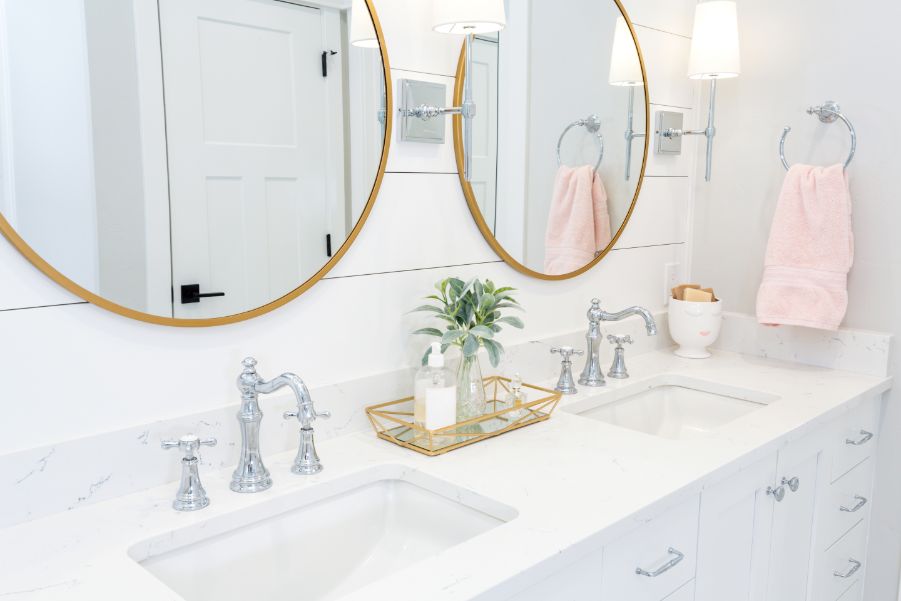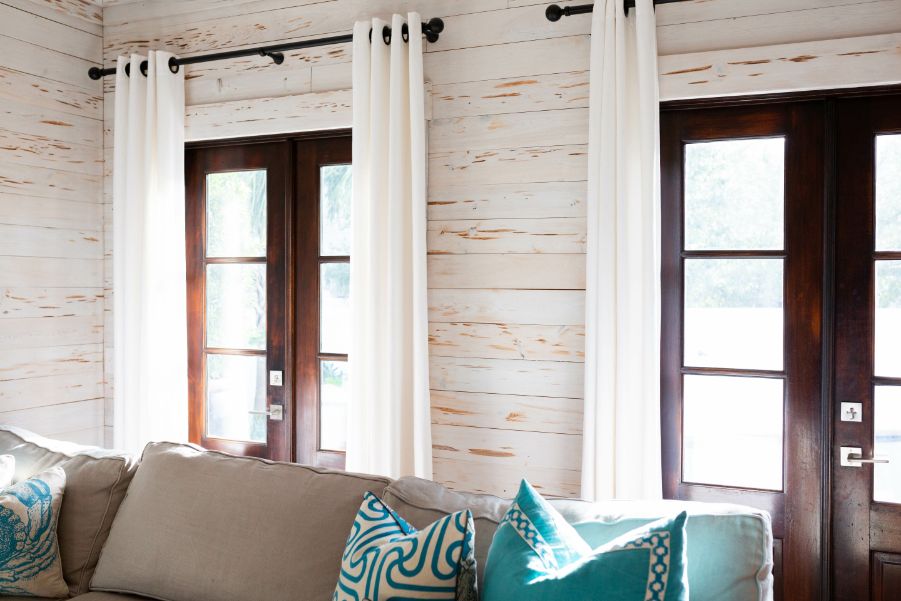If you’re wondering how to paint wood paneling or shiplap, you’re not alone. What a pain. But paneling and shiplap make such a bold statement and add so much character to your home that learning how to paint them is well worth the trouble.
Can Paneling Be Painted? You Bet!
Most paneling was from the 1950s-70s when everyone wanted that wood look. Now, unless you have real wood in a cabin or country home, or you’re a huge midcentury modern fan, you’ll probably want to paint your paneling or shiplap to give it a modern look.
The trick is to start with the right paint, which actually means starting with a primer. Paneling is either real wood or faux, and either way, paint probably won’t stick to it without some assistance.
For the best results, priming the walls first can help cover its many sins, from smells to stains. It also provides a good surface for the paint to adhere to.
If you’re in a hurry, or primer’s off-gassing isn’t for you, go with a material that’s a mix of primer and paint. It doesn’t cover quite as well, but it does save time and your nose.
[maxbutton id=”1″ url=”https://paintquote.paintzen.com” text=”Start Your Project” ]
What’s the Best Type of Paint for Paneling and Shiplap?

Once you’ve dealt with your primer, it’s time to turn to your paint finish.
As with walls, eggshell or satin are your best bets.
Semigloss is easy to clean, but it’s going to be too shiny on a field as big as a wall. And matte is a flat finish, but it’s hard to clean. So, go for those middle-ground paints.
Hold Up – Don’t Load Your Roller Just Yet
If you’re working with real wood – whether it’s paneling or shiplap – before you paint, you must sand. Yes, it’s a pain. And yes, it’s necessary. Why? Because if the boards are rough, no primer or paint will adhere.
So, break out your 80-grit sandpaper and a palm sander or electric sander and smooth the boards. Once you’ve finished that first pass, use higher-grit sandpaper and do them again.
Then, wipe them down to remove all the dust. (You can vacuum the wall using your brush attachment, too.)
If you don’t want the nail holes in the wall to show, fill them with caulk now. Just let it dry, then sand the holes before you prime.
Ready, Set, Paint

Now, the real fun starts. And by fun, we mean showing you how to paint shiplap grooves. You can do this in two ways, and both have their pluses and minuses.
The first way is to load a small brush with paint and carefully paint between the boards. This is time-consuming when you do it right, but it’s also the best way to get them done if you’re going to roller the walls. After you paint the grooves, you can roll your paint on like you would with a regular wall.
The second way is to paint with a sprayer. The upside is that the sprayer will get everything, including the cracks. The downside is that any extra time you save painting, you lose in meticulously taping and tarping the room to protect it from overspray.
As you can see, painting shiplap and paneling can be difficult – but just requires a little know-how and elbow grease.
Want to see some fun painting projects or browse paint colors? Check out our Color Tool today.
[maxbutton id=”1″ url=”https://paintquote.paintzen.com” text=”GET A QUOTE” ]